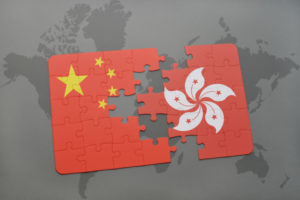The US is attempting to avert another debt ceiling crisis. To try and gauge where shares in Hong Kong will trade, investors should look at the S&P 500.
Historically speaking, US debt ceiling debacles are a large congressional event with material implications to investors. These consequences can be found in the derivatives market and the stock market.
In recent OTC trading, investors have started to price in a tad more risk for the USA. According to data from Bloomberg, US Credit Default Swaps (CDS) have increased about 6 basis points. This quantifies the cost buyers pay to protect their bonds in case of default.
Interestingly enough, the cost of bond protection has actually dropped since the USA’s credit was downgraded. After spiking to just over 60 bps the first time the USA’s credit was downgraded, the 5yr CDS hedge currently trades at 26 bps, or about a 56% decline since the historic downgrade on August 5th, 2011.
Trading wise, the debt ceiling in 2011 was the most material. Leading up to this event and a bit thereafter, from August 1st to the 8th, Hong Kong traded down 13.1%, as measured by the iShares MSCI Hong Kong ETF. HK basically ended up following the US however, the S&P 500 traded down 13.8% in the same period.
The next Debt Ceiling debacle actually benefited HK. The same ETF rallied 1.9% from October 1st to the 17th of 2013. This was during the period the US government was in partial shutdown mode after not being able to raise the ceiling. The US market also rallied 2.8% during this time.
While there is a small data set, the trend seems to be that investors are getting comfortable with this idea of a debt ceiling debate, as the impact of a debate has decreased. Investors looking for a directional indicator don’t have to look far, just to the S&P 500.



